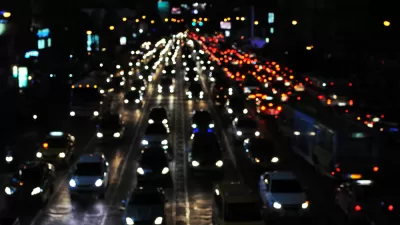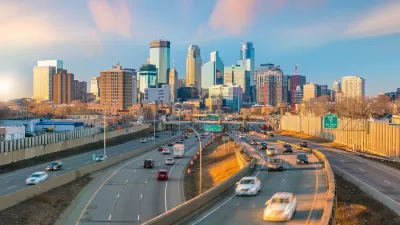Cities with rapidly growing populations and inadequate public transit systems are seeing more gridlock despite changes in commuting patterns and the rise of remote work.

Despite a slight reduction in traffic congestion in most U.S. cities since the start of the pandemic, roads in some of the country’s fastest-growing cities are experiencing more traffic. As Konrad Putzier explains in the Wall Street Journal, “Local roads, built decades ago for a much smaller population, are struggling to accommodate the new reality.”
The article details the potential losses caused by congestion, arguing that gridlock can make regions less productive by discouraging new employers and driving up housing costs in the denser areas nearer to city cores. A recent blog post by Todd Litman argues that congestion costs are not as high as estimated by some, and that other factors should more strongly affect transportation planning decisions.
Putzier’s article points to average traffic speeds as one measure of congestion, particularly in residential areas. However, Putzier does not mention whether traffic calming or other road safety initiatives could have contributed to slower speeds, which are shown to reduce the chance of fatal crashes. It even highlights one Miami-area driver who “said she started driving an SUV to get a higher-perched view of the gridlock in front of her.” Meanwhile, larger SUVs are contributing to higher rates of pedestrian deaths.
Putzier does note that improving public transit, which is often lacking in many Sunbelt cities, can alleviate congestion and make housing more accessible to more residents. However, he highlights complaints that “You’ll see an extra lane here or there, but by and large it just can’t keep up” without acknowledging that this is a tacit admission that building more roadways only induces traffic demand.
FULL STORY: Sunbelt Traffic Jams Are Frustrating Drivers and Threatening Growth

Planetizen Federal Action Tracker
A weekly monitor of how Trump’s orders and actions are impacting planners and planning in America.

Chicago’s Ghost Rails
Just beneath the surface of the modern city lie the remnants of its expansive early 20th-century streetcar system.

San Antonio and Austin are Fusing Into one Massive Megaregion
The region spanning the two central Texas cities is growing fast, posing challenges for local infrastructure and water supplies.

Since Zion's Shuttles Went Electric “The Smog is Gone”
Visitors to Zion National Park can enjoy the canyon via the nation’s first fully electric park shuttle system.

Trump Distributing DOT Safety Funds at 1/10 Rate of Biden
Funds for Safe Streets and other transportation safety and equity programs are being held up by administrative reviews and conflicts with the Trump administration’s priorities.

German Cities Subsidize Taxis for Women Amid Wave of Violence
Free or low-cost taxi rides can help women navigate cities more safely, but critics say the programs don't address the root causes of violence against women.
Urban Design for Planners 1: Software Tools
This six-course series explores essential urban design concepts using open source software and equips planners with the tools they need to participate fully in the urban design process.
Planning for Universal Design
Learn the tools for implementing Universal Design in planning regulations.
planning NEXT
Appalachian Highlands Housing Partners
Mpact (founded as Rail~Volution)
City of Camden Redevelopment Agency
City of Astoria
City of Portland
City of Laramie





























